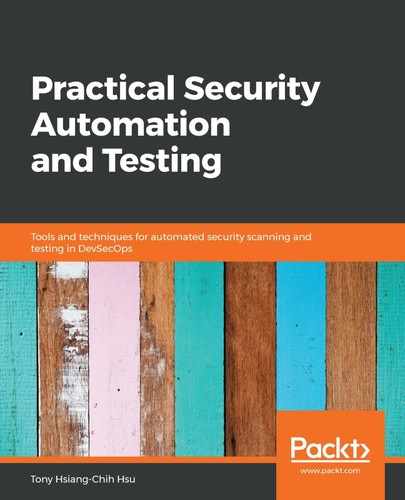Book Description
Your one stop guide to automating infrastructure security using DevOps and DevSecOps
Key Features
- Secure and automate techniques to protect web, mobile or cloud services
- Automate secure code inspection in C++, Java, Python, and JavaScript
- Integrate security testing with automation frameworks like fuzz, BDD, Selenium and Robot Framework
Book Description
Security automation is the automatic handling of software security assessments tasks. This book helps you to build your security automation framework to scan for vulnerabilities without human intervention.
This book will teach you to adopt security automation techniques to continuously improve your entire software development and security testing. You will learn to use open source tools and techniques to integrate security testing tools directly into your CI/CD framework. With this book, you will see how to implement security inspection at every layer, such as secure code inspection, fuzz testing, Rest API, privacy, infrastructure security, and web UI testing.
With the help of practical examples, this book will teach you to implement the combination of automation and Security in DevOps. You will learn about the integration of security testing results for an overall security status for projects.
By the end of this book, you will be confident implementing automation security in all layers of your software development stages and will be able to build your own in-house security automation platform throughout your mobile and cloud releases.
What you will learn
- Automate secure code inspection with open source tools and effective secure code scanning suggestions
- Apply security testing tools and automation frameworks to identify security vulnerabilities in web, mobile and cloud services
- Integrate security testing tools such as OWASP ZAP, NMAP, SSLyze, SQLMap, and OpenSCAP
- Implement automation testing techniques with Selenium, JMeter, Robot Framework, Gauntlt, BDD, DDT, and Python unittest
- Execute security testing of a Rest API Implement web application security with open source tools and script templates for CI/CD integration
- Integrate various types of security testing tool results from a single project into one dashboard
Who this book is for
The book is for software developers, architects, testers and QA engineers who are looking to leverage automated security testing techniques.
